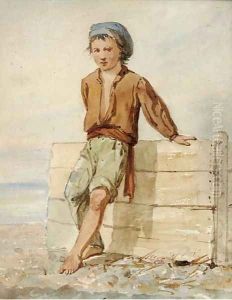Prosper-Joseph Florence Paintings
Prosper-Joseph Florence, not widely known in the annals of art history, was a Belgian artist born in 1812, in the wake of the Napoleonic era which had a profound impact on Europe culturally and politically. He was part of the 19th-century European art scene, a period that saw the rise of Romanticism and later movements such as Realism and Impressionism. However, there is limited information available on Florence, which suggests that he might not have achieved significant fame or recognition during his lifetime.
His life spanned the majority of the 19th century, a time that was characterized by significant social, political, and industrial changes. The artistic context of this period was equally dynamic, with artists exploring new subjects, techniques, and styles. The Romantic movement, which prioritized emotion and individualism, was giving way to Realism by the mid-19th century, with artists focusing on depicting contemporary life and society with a truthful eye.
Florence's work, as much as it is known, likely reflected the broader trends of his time. Without specific details on his oeuvre, it is difficult to categorize his style or contributions precisely. He may have been a painter, a sculptor, or engaged in other artistic practices common to the period. His works could have been landscapes, portraits, historical scenes, or everyday life representations, which were all popular genres of the time.
Prosper-Joseph Florence passed away in 1891, at the end of a century that had seen art transition through several major phases. The lack of substantial records about his life and work suggests that he may not have been a prominent figure in art history or that his works may have been overshadowed by his contemporaries. Nevertheless, like many artists of his time, his contributions, however minor they might be in the broader scope of art history, were part of the rich tapestry of 19th-century European art. His death marked the end of a life spent during a vibrant and transformative era for the arts.
